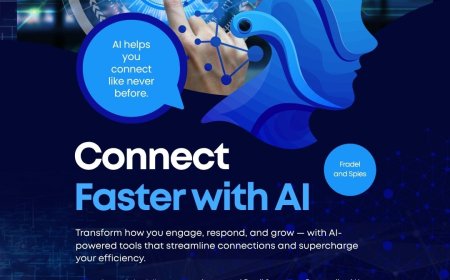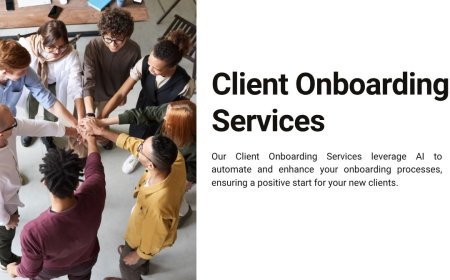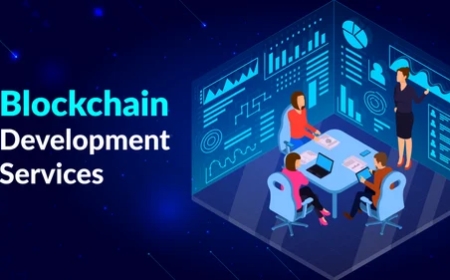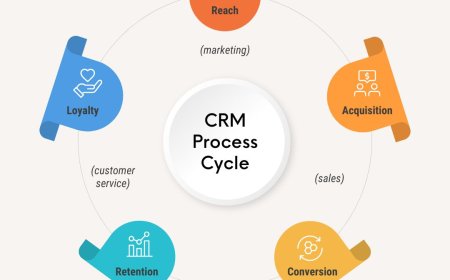Hiring a Developer vs Building In-House: What Works Best in 2025?
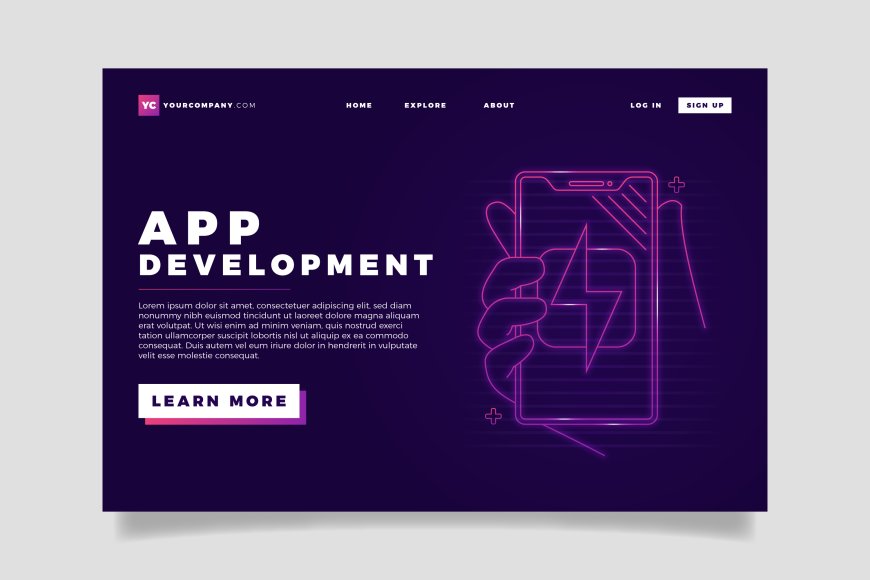
Introduction
Every founder and product leader in 2025 faces a crucial decision: Do I hire an external developer or build an in-house team? Its no longer a simple matter of cost or convenienceits a strategic choice that can shape your startups future.
In a world where technology evolves faster than ever, the way you build your product matters. Hiring externally offers speed, flexibility, and access to global talent. Building in-house, on the other hand, provides long-term alignment, tighter collaboration, and deep product knowledge.
This decision isnt one-size-fits-all. What works for a two-person bootstrapped startup might completely fail for a scaling SaaS business with 10,000 users. Thats why weve created this comprehensive guide.
Inside, youll find:
- A breakdown of both optionsfreelancers/agencies vs internal teams
- Pros, cons, and cost comparisons
- Decision-making frameworks based on the company stage
- Emerging trends like AI, no-code, and global remote hiring
- Common mistakes to avoid, and how to transition smartly
Whether youre validating a new idea or scaling an existing product, this guide will help you make a smarter, more strategic decision for your business in 2025.
Understanding the Core Difference
Hiring Developers (Freelance or Agency)
Hiring externallyeither through freelance contracts or development agenciesis all about flexibility and speed. This model allows you to bring in highly skilled developers on a project-by-project basis, without the long-term commitments or overhead that come with full-time employees.
What makes this approach attractive in 2025?
- Specialization: Need a Flutter expert? A backend specialist in Node.js? A Web3 or AI integration wizard? Theres a contractor out there ready to dive in immediately.
- Global reach: Hire developers from anywhere in the world, at a fraction of what youd pay in major tech hubs.
- Rapid delivery: Get your MVP or feature launched in weeks, not months.
This is ideal if you need a short-term boost, a prototype, or youre testing an idea before going all-in. It also suits non-technical founders who need to move quickly without the burden of managing a full dev team.
Building an In-House Team
Building in-house means hiring full-time employees who grow with your company. Its a long-term investment that pays off when your product starts maturing or requires ongoing iteration and scaling.
Why companies choose to go in-house:
- Vision and culture alignment: In-house developers are immersed in your mission. They know your users, business model, and long-term roadmap.
- Product ownership: Full-timers care more deeply about quality, scalability, and long-term performance. Theyre not just shipping featurestheyre building a company.
- Faster iteration over time: While it might take longer to onboard, in-house teams move faster in the long run due to shared knowledge and streamlined collaboration.
If youre post-MVP, starting to scale, or working on a product that demands continuous improvement, building an internal team becomes essential.
Pros and Cons of Hiring Developers
Advantages of Freelancers and Agencies
Freelance developers and dev agencies provide unmatched agility and efficiency, especially in the early phases of your startup journey.
Key benefits:
Cost-Effective
No payroll taxes, no benefits, no office expenses. You pay only for the time or deliverables.
Speed to Market
Skip the long hiring process. Hire today, build tomorrow.
Diverse Skill Sets
Need a specialist in a niche language or tool? Agencies and freelancers usually bring focused experience.
Scalability
Add or reduce resources based on project phases. Perfect for seasonal or one-off builds.
Reduced Risk
Youre not locked into a long-term contract. If it doesnt work out, you move on.
This setup works great when launching MVPs, validating product-market fit, or augmenting your core team.
Disadvantages of Hiring Externally
Despite its advantages, hiring externally isnt without risks.
Drawbacks to consider:
Lack of Long-Term Alignment
Freelancers may leave once the project is done. That can hurt continuity and product evolution.
Inconsistent Quality
Not all developers are created equal. Poor documentation or rushed code can cost more in the long run.
Limited Ownership and Buy-In
Most external devs dont have a stake in your success. They deliver whats requested, not always whats needed.
Handoff Challenges
Moving from a hired developer to an internal team later can be messy without good documentation and version control.
Timezone and Communication Barriers
If youre hiring internationally, be ready to manage asynchronous workflows and potential delays.
While freelancers and agencies are great for early builds, they might struggle to support long-term product vision unless you plan ahead.
Pros and Cons of In-House Teams
Benefits of Internal Teams
In-house teams are built for depth, not speed. They bring long-term thinking, deep product context, and full alignment with your startups goals.
Why in-house shines:
Strong Product Ownership
Internal devs know your roadmap, business model, and customer pain points. That makes decision-making faster and smarter.
Tighter Collaboration
Full-timers work closely with marketing, design, and sales. Ideas turn into features faster.
Cultural Fit and Company Loyalty
Developers who feel like part of your team are more invested in outcomes, not just deliverables.
Ongoing Support
Bugs? Feedback? Feature changes? In-house teams are ready to handle itno waiting.
Innovation
A stable team has more freedom to test, improve, and iterate without the constant onboarding overhead.
Challenges with In-House Hiring
Of course, building in-house comes with its own set of challenges.
Hiring Takes Time
Quality developers dont flood your inbox. Recruiting, interviewing, and onboarding can take weeks or months.
Higher Cost
Salaries, benefits, equity, tools, and workspace (if not remote) all add up. Youre playing a long-term game.
Management Overhead
Someone has to lead the team, set priorities, review code, and track progress. Youll need a technical lead or CTO.
Scaling Pains
As your company grows, so do the complexitieshiring, performance reviews, burnout, retention, and more.
In-house is ideal once youve found product-market fit, validated your business model, and need to build with scale in mind.
Challenges with In-House Hiring (Continued)
One of the most cited challenges in 2025 for building in-house teams is high overhead. Unlike freelance developers, full-time employees require:
- Competitive salaries (often inflated by demand)
- Health benefits, retirement plans, and bonuses
- Equipment, software licenses, and workspaces
- Time and money invested in onboarding and training
And it doesnt stop there. Recruiting itself is slow and resource-heavy. Finding top-tier developers who are the right cultural fit can take weeksor even months. Youll need job boards, recruiters, vetting systems, and interview time, all of which require financial and human capital.
Then theres the scaling complexity. As your team grows:
- Youll need team leads, product managers, and QA testers.
- Processes for version control, code reviews, and feature rollouts must mature.
- Internal communication must evolve to prevent silos and productivity loss.
If not managed correctly, your in-house team can become a bottleneck instead of a growth engine. Thats why timing and structure are everything.
2025 Trends That Impact Your Decision
Remote-First Development Teams
The global shift to remote work has completely reshaped how startups think about team structure. In 2025, even companies with in-house teams often run them remotely, hiring across time zones and continents to access better talent and control costs.
Impacts of remote-first norms:
- Blurred lines between in-house and outsourced work
- Increased use of collaboration tools like Slack, Linear, Notion, and GitHub
- Emphasis on async communication and outcome-driven roles
- More founders choosing hybrid teams: core in-house devs + flexible freelance talent
Remote-first work enables companies to scale leaner, faster, and more strategically, but it also requires clear communication protocols and disciplined project management.
No-Code, AI, and Automation Tools
The tech stack of 2025 isnt just React or Flutterits Bubble, Make.com, Zapier, Retool, and AI copilots. Startups are increasingly using no-code and AI-based tools to prototype, launch, and automate faster than ever before.
When is a lean dev team enough?
- Youre validating an idea or an MVP
- The product isnt technically complex
- Youre building internal dashboards or customer support tools
Examples:
- Use Bubble for a functional web app MVP
- Connect Stripe to Notion via Make.com
- Use AI tools to auto-generate code, landing pages, or documentation
With these tools, one or two smart product-minded developers can achieve what used to take a full dev team. This trend favors hybrid hiring models, where strategic roles are in-house, and execution is outsourced or automated.
Decision-Making Framework: Whats Right for You?
Early-Stage Startups (01)
If you're just starting out and building an MVP, hiring in-house is usually a mistake. At this stage, you need:
- Speed over perfection
- Validation over scalability
- Flexibility over structure
Best move: Hire freelancers or an agency to get your first version live. Focus on learning what users want, not building a perfect architecture.
Growth-Stage Startups (110 team)
Once youve found some traction and raised early funding, its time to start thinking about building your internal core team.
The hybrid approach works best here:
- Hire a product-minded full-time developer or lead
- Keep freelancers for overflow or specialist roles
- Begin standardizing tools, code quality, and release cycles
At this stage, culture, processes, and roadmap ownership become more important than just getting code shipped.
Scaling Companies (10+ employees)
If youre scaling a SaaS or digital product with a growing user base, you likely need a fully structured in-house tech team with:
- Frontend and backend specialists
- QA testers
- DevOps engineers
- A CTO or technical product owner
This ensures product stability, team cohesion, and long-term innovation.
You can still use contractors for:
- Overflow capacity during peak releases
- Specialized one-off integrations (e.g., AI features, blockchain)
But the core of your product team should be in-house at this point.
Key Roles to Consider Internally Before Going Fully In-House
The Product-Minded Developer
This hybrid role is gold in 2025. They dont just buildthey think in terms of user experience, metrics, and outcomes. They:
- Talk to customers
- Prioritize impact over elegance
- Align closely with product and growth teams
If you're making your first full-time dev hire, this is the role to fill.
The Technical Co-Founder or CTO
When technical decisions impact your funding, product roadmap, and future hires, its time to bring in a true technical leader.
A great CTO:
- Builds early versions AND plans for scale
- Helps hire and mentor developers
- Owns the technical vision and infrastructure
- Keeps the founder focused on business, not bugs
If you're post-MVP and raising capital, investors will expect this role to be filled, either as a co-founder or senior hire.
The Technical Co-Founder or CTO: When Leadership Makes All the Difference
Hiring a skilled developer isimportant, but having the right technical leader can be a game-changer. In 2025, more startups are realizing that a CTO or technical co-founder isnt just a codertheyre a strategic architect for the entire product and infrastructure.
What makes a great CTO so valuable?
- Vision alignment: They understand the business model, customer pain points, and how tech drives growth.
- Hiring and mentoring: They help recruit, train, and scale your dev team while maintaining code quality and culture.
- Tech stack decisions: They choose the right technologies for long-term scalability, not just whats trendy or fast to build.
- Investor credibility: Especially in seed or Series A rounds, investors want to see a strong technical lead who can execute.
Without a CTO, many startups hit a ceiling. Features get delayed, bugs pile up, tech debt grows, and your roadmap becomes reactive. Bringing in a founder-level leader or experienced tech lead helps you stay proactive, build smarter, and scale with confidence.
Cost Comparison: Developer vs In-House Team
Short-Term vs Long-Term Cost Breakdown
In the early stages, hiring freelancers or agencies usually costs less upfront. But over time, an in-house team becomes more cost-efficient if youre building a long-term product.
Freelance/Agency (Short-Term Costs):
- Developer: $35$120/hour, depending on location and skill
- Project-based quotes: $10,000$50,000+ for MVPs
- No additional overhead: No benefits, taxes, or tools required from you
In-House Developer (Long-Term Costs):
- Salary: $80,000$160,000/year depending on region
- Benefits: Healthcare, PTO, equity, bonuses
- Tools/licenses: $1,000$5,000/year per developer
- Management overhead: Requires a CTO or a lead to oversee
Bottom line:
If you just need a working MVP or short-term build, freelancers are more cost-effective. If you're building a company around your product, investing in in-house makes financial and strategic sense.
Tools, Management, and Maintenance Costs
Beyond people, both models come with tooling and operational costs:
Category: Freelancers/Agencies, In-House Teams
Project Management: Asana, Trello (usually included), Notion, Jira, Linear (you pay)
DevOps/Hosting is included in scope. You pay for AWS, Heroku, Vercel, etc.
Design Collaboration Agency may handle UI/UX Figma/Adobe ($15$45/month/user)
Testing & QA : Often manual, need separate QA tools/processes
Code Repos Shared (GitHub/GitLab), Paid plans for teams
In-house teams require more infrastructure, but offer more customization and control.
Hybrid Approach: The Best of Both Worlds?
Using Freelancers to Prototype and In-House to Scale
Many of the smartest startups in 2025 follow a hybrid model:
- Start with freelancers or a dev agency to get your MVP built and validated
- Once you know what users want, bring development in-house to optimize and scale
This approach allows you to:
- Move fast without upfront commitments
- Limit risk before hiring long-term staff
- Focus in-house efforts on high-impact features and strategy
Example:
You hire a freelance dev to build your V1 fitness app in 10 weeks. After launch, users love the habit tracker feature. You then hire a full-time dev to scale that feature, improve retention, and add integrations.
Building a Core Team and Augmenting with Contractors
Even after going in-house, you dont need to build everything internally. Many startups:
- Hire a small core team for key product areas
- Use contractors for specific needs like DevOps, integrations, QA, or one-off features
Benefits:
- Flexibility to scale up/down
- Access to specialists without long-term costs
- Keeps your core team lean and focused
This mix lets you enjoy the speed of outsourcing with the alignment of in-house, especially useful for bootstrapped or post-seed startups scaling fast.
Red Flags and Mistakes to Avoid
Underestimating Scope or Overcommitting Early
A common early-stage trap: hiring a full dev team before you even validate your product.
What happens?
- You burn cash building features users dont want
- You spend months perfecting a product instead of testing demand
- You delay launch, miss market opportunities, or pivot too late
Tip: Start lean. Build a version you can test fast. Then double down with a stronger team once you have data and demand.
Poor Handoff and Documentation with Hired Developers
Many startups suffer when freelancers leave, and no one knows:
- How the code is structured
- Where the API keys are
- What was pushed to production last
Avoid this by:
- Requiring all freelancers to document their work
- Storing code in shared GitHub/GitLab repos
- Keeping changelogs and architecture notes in Notion or a dev wiki
- Using Loom or screen recordings to explain code setups
Whether you stay freelance or move in-house, good documentation protects your IP, product stability, and future scalability.
Conclusion
Choosing between hiring a developer and building an in-house team isnt a binary decisionits a strategic call based on your stage, goals, and resources.
Heres the TL;DR:
- Just starting out? Hire a freelancer or agency to test your idea fast.
- Seeing traction? Bring in a product-minded dev or tech lead.
- Scaling quickly? Build a structured, in-house team supported by contractors.
In 2025, startups have more flexibility than ever, but also more complexity. Pick the model that gives you the right balance of speed, ownership, and scalability.
Whatever you do, think long-term. Code is easy. Teams are hard. But what is the right hiring strategy? Thats how you build something that lasts.
FAQs
Whats the average cost of hiring a freelance developer in 2025?
Rates range from $35$120/hour depending on skill, location, and tech stack. A small MVP project might cost $10K$30K on average.
When should I consider building my tech team in-house?
Once youve validated your product, started generating revenue or traction, and need to iterate or scale rapidly, its time to hire internally.
Can I switch from a hired dev to an in-house team later?
Yes, many startups do. Just ensure the codebase is well-documented, repositories are clean, and handover materials are provided.
What legal considerations should I keep in mind with contractors?
Use contracts with clear IP ownership, NDAs, and scope terms. Consider using platforms like Deel, Remote, or Upwork to manage compliance and payments.
Is it possible to build a full product with freelancers only?
Yes, especially for MVPs or single-platform apps. But for complex, evolving products, transitioning to a hybrid or in-house team is often necessary for quality and speed.

































